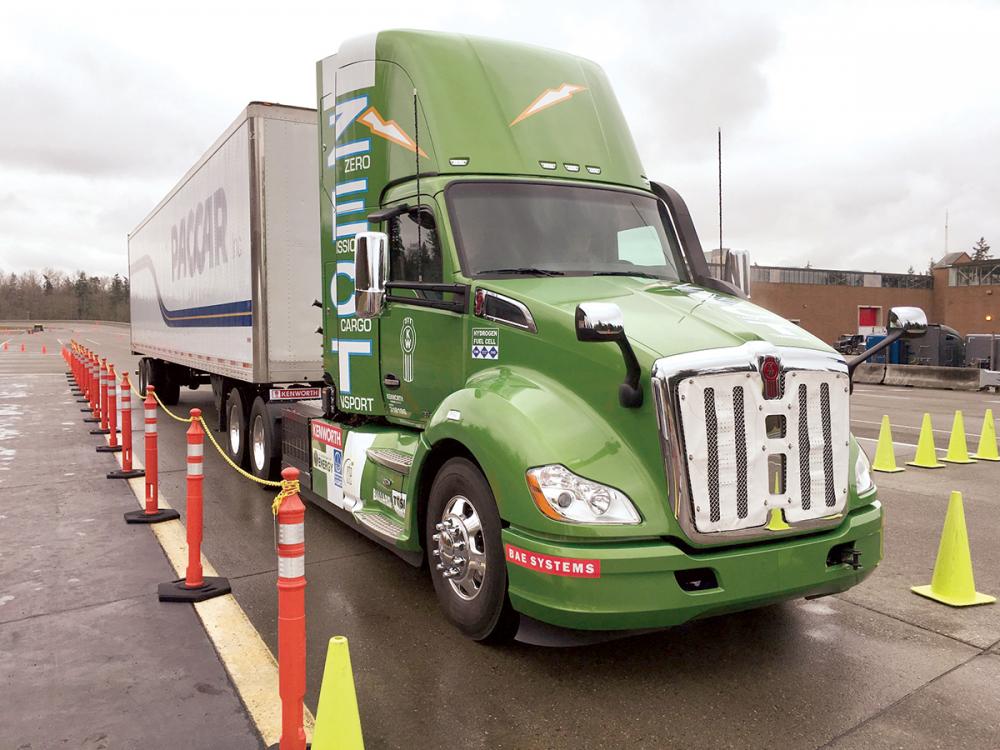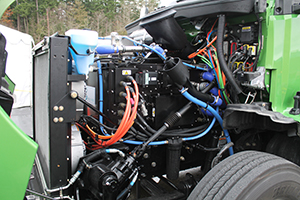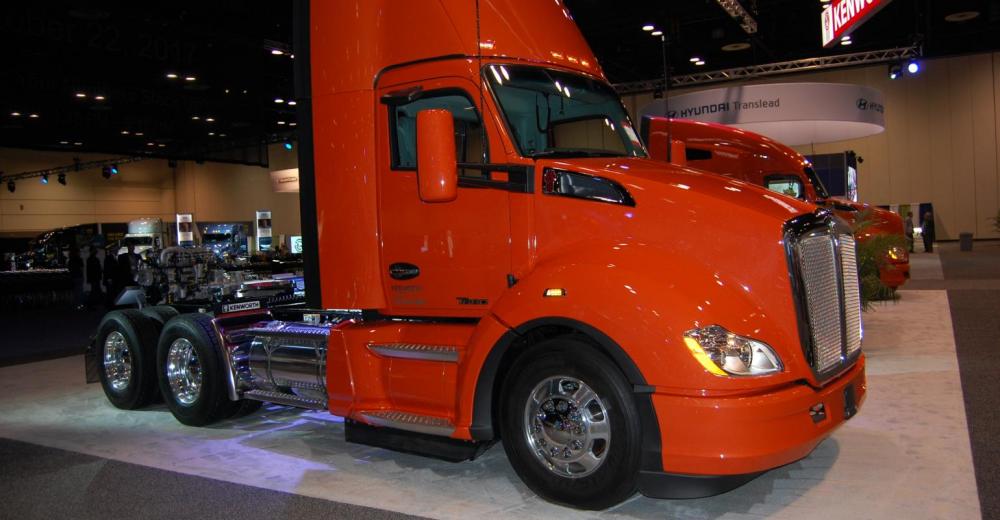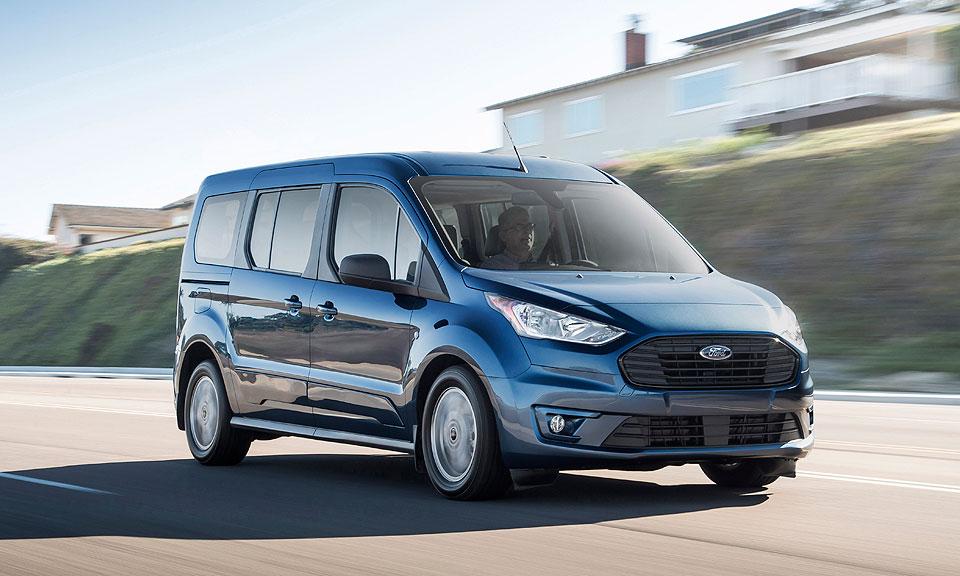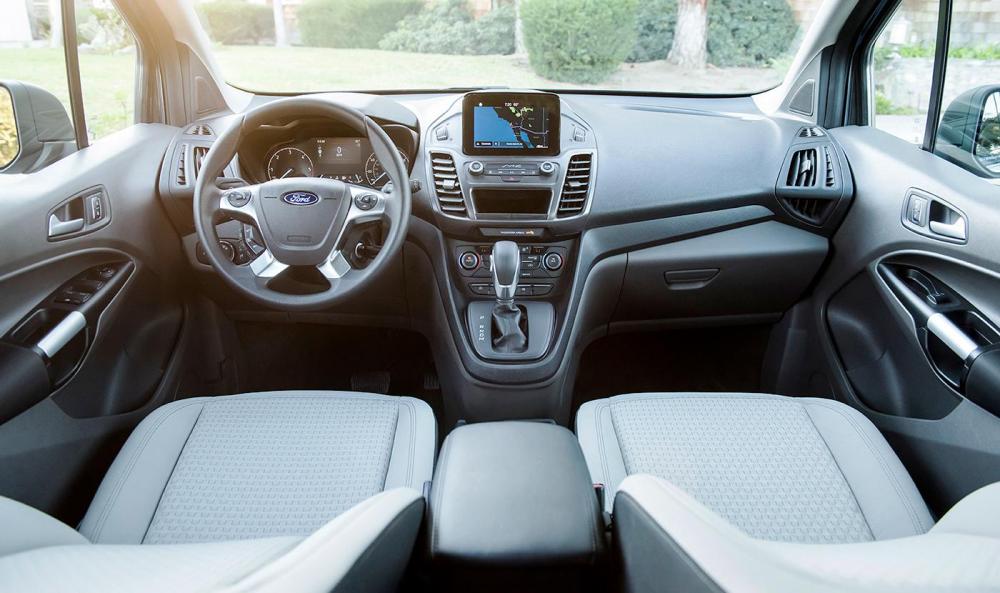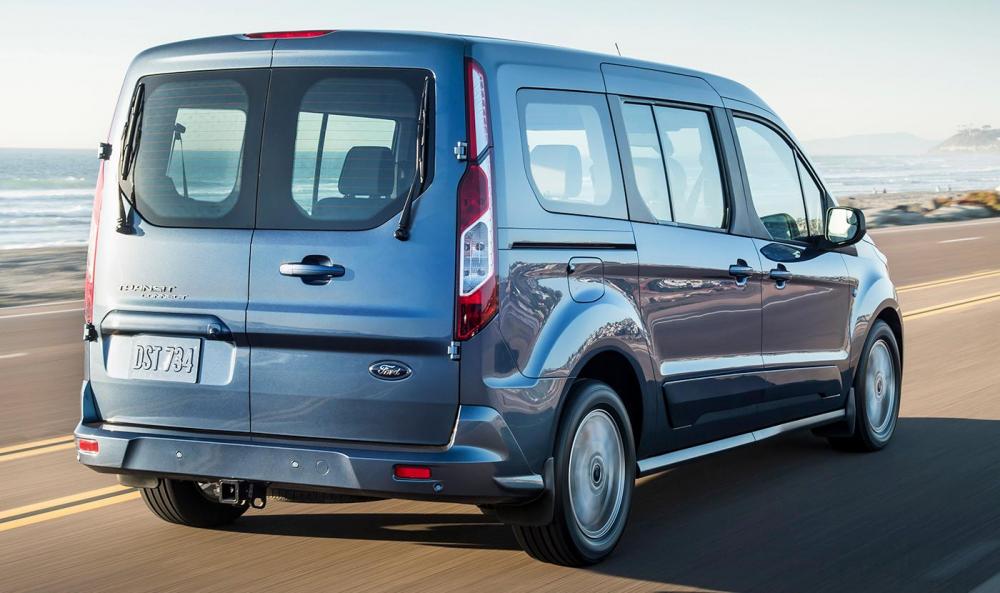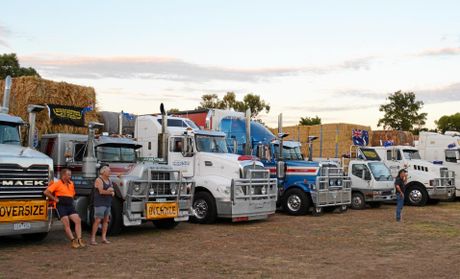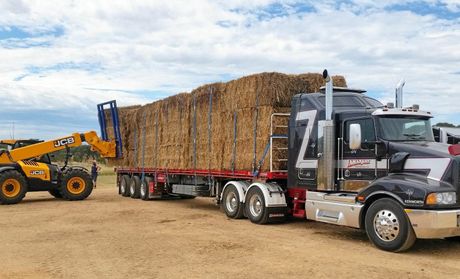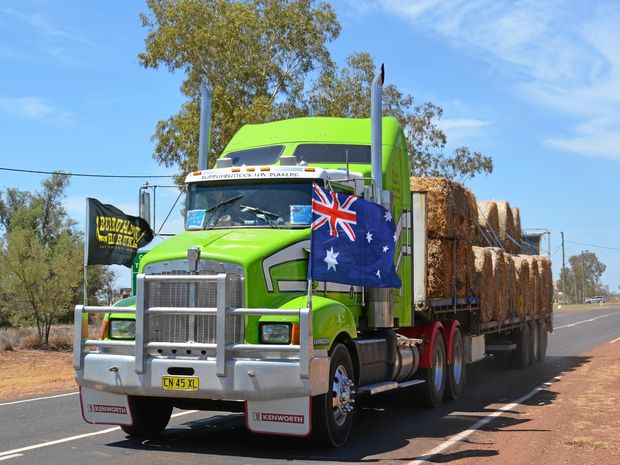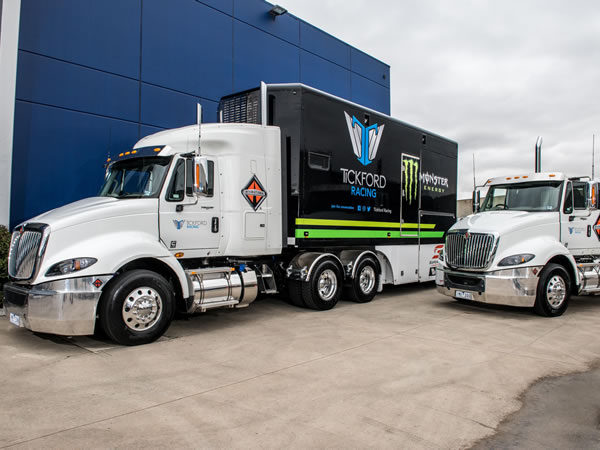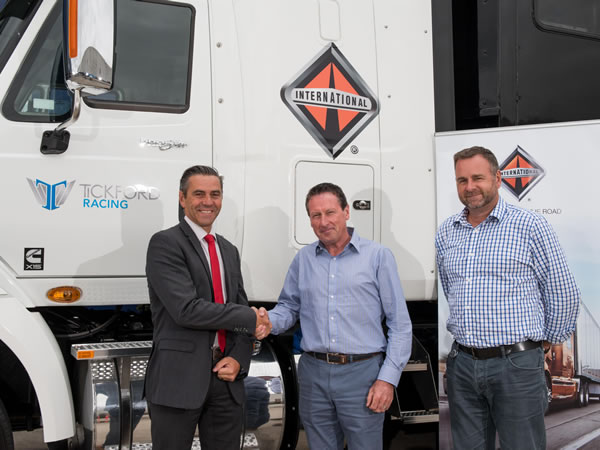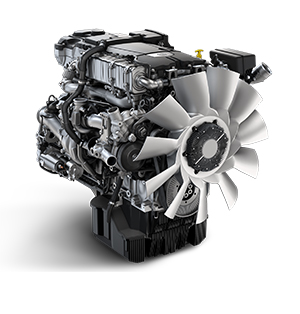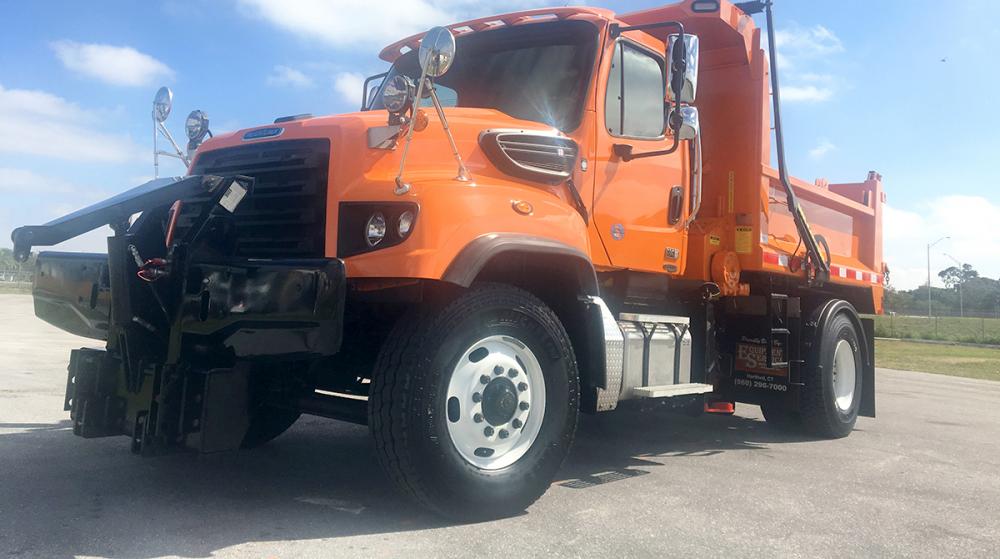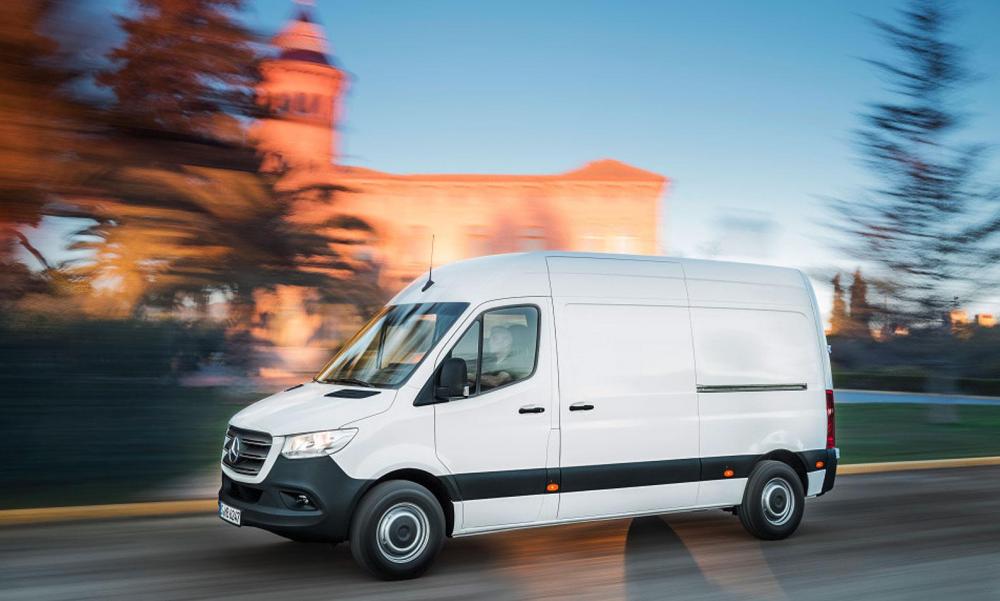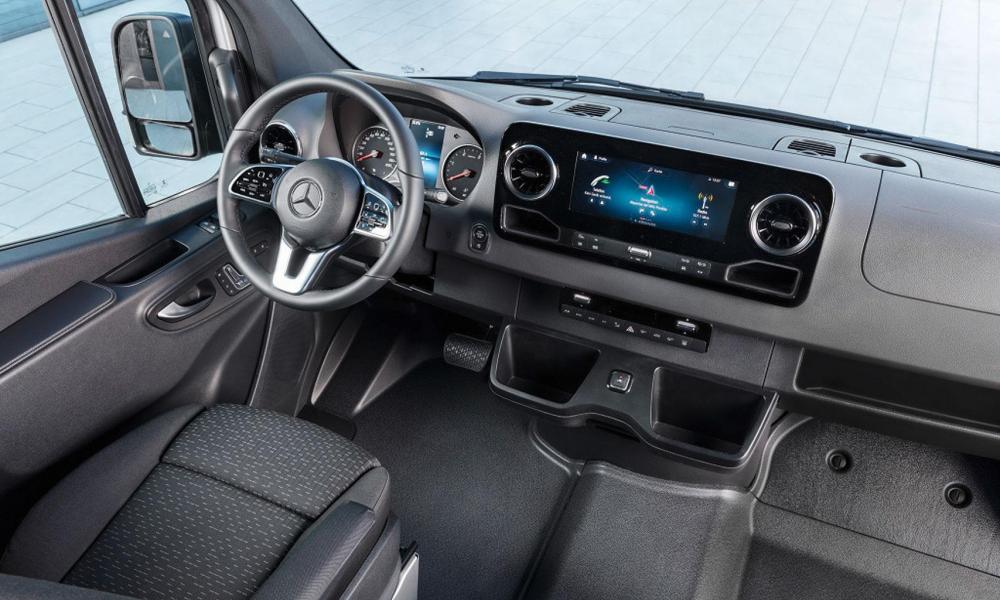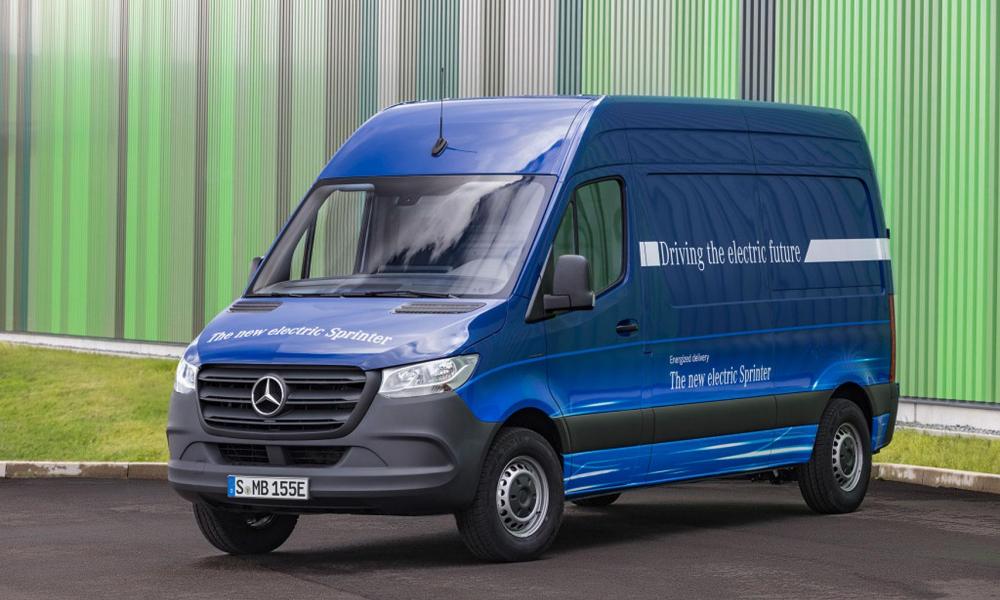
kscarbel2
Moderator-
Posts
18,868 -
Joined
-
Days Won
114
Content Type
Profiles
Forums
Gallery
Events
Blogs
BMT Wiki
Collections
Store
Everything posted by kscarbel2
-
Kenworth Plans for Hydrogen-Electric Class 8
kscarbel2 replied to kscarbel2's topic in Trucking News
Hydrogen Fuel Cell System - Ballard Power Systems (* Ballard made a lot of noise about fuel cells in the second half of the 1990s but nothing came of it.) Electric Propulsion System - BAE Systems (there's a military dual-use application at work here with discreet government funding) Engine: Ballard Power HC85 Traction Motor: Dual-rotor AC motors, 420 kW or 565 hp Transmission: Automated Eaton 4-speed Brakes: Bendix Air Disc ADB22X Fuel capacity: 30 kg of hydrogen Battery capacity: 100 kW-h Batteries: XALT Xpand 650 VDC * http://wardsauto.com/news-analysis/ballard-battling-break-through-daimler-and-ford-behind-it-vancouver-firm-sets-fuel-cell-agenda -
Kenworth Plans for Hydrogen-Electric Class 8
kscarbel2 replied to kscarbel2's topic in Trucking News
Kenworth Preps Hydrogen-Electric T680 for Drayage at SoCal Ports Transport Topics / February 8, 2018 MOUNT VERNON, Wash. — Kenworth Truck Co. is wrapping up tests on a zero-emissions hydrogen-electric Class 8 truck that will be operating in drayage applications in Southern California by the end of March, company executives said. California has set a goal of having 100,000 zero-emissions freight vehicles in operation by 2035, and the Port of Los Angeles and the Port Long Beach, where Kenworth’s Zero Emissions Cargo Transport truck will operate, have included zero-emissions trucks into their latest clean air action plan. “We are developing a path to production” for the truck, whose only emission is water vapor, Stephan Olsen, director of product planning for Kenworth, told Transport Topics Feb. 6 at Paccar’s Technical Center here. The ZECT truck, which produces little engine noise when compared to a diesel, carries 30 kilograms of hydrogen behind the cab in six tanks, each pressurized to 5,000 PSI. Refueling with hydrogen can be done in 15 minutes. Instead of an internal combustion engine, a fuel cell sits under the hood and produces electricity by combining compressed hydrogen and air to generate the current. A battery stack, weighing about 2,200 pounds, is located below the seats and stores the electricity. Related cables, lines and systems add another 1,500 pounds. A dual-rotor electric motor propels the truck with an output the equivalent of 565 horsepower. The truck is capable of carrying 80,000 pounds and uses an automated manual transmission. In all, it weighs in at 22,000 pounds, or 6,000 pounds more than the diesel-powered version of the model T680 truck. The truck has a range of 150 miles and can operate for 30 miles on batteries alone. The system also can recharge the lithium-ion batteries for use later. A hybrid drive setup manages the power from the fuel cell to and from the batteries as well as the traction motors at the wheels and other components, such as the electrified power steering and brake air compressor, according to Kirkland, Wash.-based Kenworth. Total Transportation Services Inc. will lease the prototype ZECT truck from Kenworth and operate it at both the Port of Los Angeles and the Port of Long Beach, the two largest ports, respectively, in the nation, Kenworth said. The truck will be fueled at the carrier’s yard. The asset-based logistics provider is located in Rancho Dominguez, Calif., and endorses reducing operational emissions and leaving as small a footprint as possible on the environment. “We want to learn how the truck will interact with the rest of the fleet, the drivers and infrastructure,” Olsen said. Kenworth’s truck is part of a demonstration project managed through Southern California’s South Coast Air Quality Management District. About 60,000 trucks are involved in shorthaul operations in the LA Basin, Brian Lindgren, research and development manager, Kenworth, told TT. The only way to get to zero emissions is either with hydrogen- or battery-electric power, Lindgren said. For heavy-duty trucks, battery electric has some challenges, he said. For instance, the batteries are heavy and expensive. Also, keeping them charged presents challenges. “Either you charge them for a long time or you charge them at a very high power rate. So that hasn’t all been worked out yet,” Lindgren said. Also, Kenworth’s zero-emissions truck has more electronics compared with a diesel or natural gas engine due to all of the systems that require electricity. “We are also controlling the batteries, fuel cell and the cooling systems — all electronics,” Lindgren said. At the same time, many of the components are familiar to what the truck maker specs on a standard T680. These include, among others: the front air disc brakes, the front suspension, the rear axle, rear brakes, rear suspension and tires on the 6X4 truck. The truck will have the ability to go 30 mph on a 6% grade, can reach a top speed of 65 mph and has enough torque to get started on 20% grade with an 80,000-pound load. . -
Transport Topics / February 8, 2018 Stephan Olsen, director of product planning at Kenworth Truck Co., talks about the company preparing a hydrogen-electric Class 8 for use in SoCal ports. Olsen spoke February 6, 2018, at Paccar’s Technical Center in Mount Vernon, Washington. .
-
Transport Topics / February 8, 2018 The California Air Resources Board on Feb. 8 unanimously approved plans to retain two Obama administration Phase 2 greenhouse gas emissions rule provisions for medium- and heavy-duty trucks that would regulate glider kits and trailer emissions. The board’s action was taken in defiance of a proposal announced by U.S. Environmental Protection Agency Administrator Scott Pruitt to repeal the glider kit provision and a plan to review the rule’s requirement that regulates trailers. EPA said that under its proposed interpretation of the Clean Air Act, it lacks the authority to regulate glider vehicles, glider engines and glider kits. The trailer provision, also under review by EPA, is in limbo after being stayed by a federal judge in connection with a lawsuit filed by the Truck Trailer Manufacturers Association. “The glider rule is a no-brainer,” said CARB board member Daniel Sperling. “It’s embarrassing what’s happening in Washington with the glider program.” In taking the action, the board approved a tweak to the federal version of the 2016 federal glider kit rule that would allow only glider kits to be manufactured in California with engines that are 2010 or newer emissions-compliant. California already requires that heavy trucks be at least 2007 compliant, said Mike Tunnell, director of environmental affairs for American Trucking Associations. It also extended by two years the effective date of the federal trailer GHG rule requirements to 2020 from 2018. The CARB plan substantially harmonizes with the federal Phase 2 standards some minor differences, said Richard Corey, CARB’s executive officer. “The Phase 2 proposal includes restrictions on the production of high emitting glider vehicles that staff believes are crucial to protecting public health,” Corey said at the CARB meeting. “If the federal glider requirements are repealed, it will allow unlimited numbers of old, remanufactured engines with little or no emission controls to be placed in new truck bodies and sold as new trucks.” Corey added, “Such uncontrolled glider vehicles can emit up to 40 times the NOx and up to 450 times particulate matter compared to compliant new trucks.” In a presentation to the board outlining the staff recommendations, Mitzi Magtoto, a CARB resources engineer, said regulating heavy duty trucks is important because they are a “significant and fast-growing” part of the total greenhouse gas emissions inventory in California. Magtoto said that CARB staff has been working closely with Obama administration EPA and National Highway Traffic Safety Administration staff for several years to help formulate the 2016 joint phase 2 GHG rule. “As part of the Phase 2 standard, U.S. EPA closed a loophole that allowed glider vehicles to circumvent emissions standards,” Magtoto told the board. “...Phase 2 also introduced trailer standards for the first time.” “Staff is very concerned with both of these issues and believes the reasons for revisiting these standards are unfounded and arguably illegal,” Magtoto added. Glider vehicles are those manufactured with new truck bodies but remanufactured engines. Magtoto said that a repeal of the glider kit rule would spell a large increase in the number of the trucks on U.S. highways, from roughly 10,000 to up to 128,000 glider vehicles. ATA’s Tunnell told the board that ATA supports CARB’s action. However, he said that the board should be aware that the extra cost that truckers will face to comply with the CARB regulation will be substantial.
-
Sean Kilcarr, Fleet Owner / February 8, 2018 E-commerce and driver demands are encouraging more fleets to order daycab tractor models, Kenworth says. MT. VERNON, WA. As truck orders reach new record heights, manufacturers such as Kenworth Truck Co. are starting to see a shift in the types of models selected by motor carriers – with more of them adding daycabs to their fleet mix. At a macro level, the impact of e-commerce is currently sparking a higher percentage of daycab orders than in the past,” said Stephan Olsen, Kenworth’s director of product planning, during an interview here at a test drive event held at the PACCAR Technical Center. The event provided editors with a chance to get behind the wheel of the company’s $7 million prototype Zero Emission Cargo Transporter (ZCET) a hybrid T680 daycab modified to run on electricity provided by both a lithium-ion battery back and hydrogen-powered fuel cell. Olsen explained that changes in distribution patterns being spurred by the “just-in-time” or “JIT” demands of e-commerce is leading fleets to order more daycab tractors than before, though he stressed that “this is certainly not the end” of demand for long-haul highway sleeper tractors. “We don’t see that long-haul coast-to-coast market going away,” Olsen noted. The other influence he sees driving demand for more daycab tractors is the desire for more home time by the incoming generation of drivers. “Fleets are trying to leverage the daycab model as a way to attract more new entrants into the driver profession,” Olsen said. “On the driver side, more and more of them want more home time.” In terms of powertrain spec’ing, however, he does not see the “sleeper versus daycab” decision changing altering engine displacement selection all that much. Olsen does think there will be more demand for automated transmissions and does think deployment of daycabs into more regional and short-haul applications will lower average speeds over a truck’s life cycle and requiring different gearing parameters. “But regardless of whether the fleet wants daycabs or sleepers, the focus remains on fuel economy,” Olsen said. “They will choose packages that deliver the best fuel economy possible.” .
-
Ford's 2019 [US market] Transit Connect Wagon adds tech, new diesel engine Michael Martinez, Automotive News / February 8, 2018 DETROIT -- Ford Motor Co. wants to position the third-generation Transit Connect Wagon as a less expensive, more capable minivan alternative to help further expand its dominant share in the commercial vehicle market. The seven-seat wagon variant of the segment-leading Transit Connect, introduced Thursday ahead of the Chicago Auto Show, comes with a new front end, new powertrain and a host of new driver-assist features. It's scheduled to go on sale this fall and will be the first U.S. vehicle with Ford's new 1.5-liter EcoBlue diesel engine that's expected to get at least 30 mpg. Ford owned about a 45 percent share of the compact van segment in 2017and hopes to grow that number by targeting active baby boomers who might not be able to afford a traditional minivan or large crossover. "It's an entry-level product that brings customers into the fold for the first time," said John Ruppert, Ford's commercial vehicle sales and marketing manager. "Small vans have turned into a really big business for us." Ford introduced the Transit Connect to the U.S. in 2010 and last redesigned it in 2014. In 2017, Ford sold 34,473 Transit Connects, nearly double the sales of the second-place Nissan NV200. To date, officials say, about 97 percent of the roughly 300,000 small vans sold since its introduction are still on the road. The midcycle retooling for the 2019 model year focuses heavily on new driver-assist technology. It will come with automatic emergency braking standard, as Ford rolls out that feature across its lineup. It's part of a pre-collision and pedestrian-detection assist package the automaker says is segment-exclusive. Available technologies include adaptive cruise control, blind-spot information system with cross-traffic alert and a lane-keeping assist. It will feature a standard embedded 4G LTE modem that provides Wi-Fi for up to 10 devices, part of a companywide initiative to connect every vehicle by 2019. The Sync 3 infotainment system is an available feature. The Transit Connect Wagon will come standard with a 2-liter four-cylinder gas engine mated to an eight-speed transmission. The 1.5-liter diesel, also paired with the eight-speed gearbox, is an available option. Officials say the vehicle will offer a class-leading towing capacity of 2,000 pounds when equipped with an available trailer tow package. The interior includes a redesigned instrument panel and center console with an available 6.5-inch touch screen. The second- and third-row seats can fold flat, and the floor is 2 feet above the ground for easy loading and unloading of items. "From being easy to get in and out of, plus flexible seating and cargo space, Transit Connect Wagon makes it easy for Boomers to keep enjoying family time or explore new hobbies and careers," Mark LaNeve, Ford's head of U.S. marketing, sales and service, said in a statement. The Transit Connect Wagon comes in two wheelbases and three trim levels: XL, XLT and Titanium. The automaker also offers a cargo van variant of the Transit Connect; a freshened version also is expected to be unveiled this year. Officials say the wagon accounts for about 15 percent of Transit Connect volume, but Ford hopes to grow that to 20 to 25 percent. The vehicle is part of Ford's dominant lineup of commercial vehicles, including the F-series pickup and Transit large van. The automaker held a 43 percent market share of all commercial vehicles through November 2017, according to the most recent Polk registration data. .
-
Big Rigs / February 8, 2018 IT'S mid-morning the eve of Australia day and the temperature is climbing, dust and a mix of hay surround a convoy of trucks lined up in southern New South Wales as they are loaded for the Burrumbuttock Hay Run. A pure act of Aussie mateship this, the 13th run, is charged with the task of delivering donations of hay and feed to drought-stricken farmers, with the 2018 run heading to Cunnamulla in southwest Queensland. Under the cloudless sky and slowly intensifying sun, Burrumbuttock's Geoffro Amarant is operating a JCB telehandler, deftly picking up large square bales of straw and loading them, with the yard a flurry of activity as trucks are shifted and straps thrown and tightened. Matt Reeve is doing his first hay run and has come down from Sydney in his Mercedes Benz and flat-top trailer to take part and pulls his truck out to strap down, with the final truck to be loaded pulling into his place. Within 20 minutes the job is done and a mini-convoy of five trucks is assembled in the paddock, including Geoffro's Kenworth T401, and BHR organiser Brendan Farrell's Kenworth T600, which will be driven to Cunnamulla by Jessica Edwards, better known to all and sundry as Jillaroo Jess. All the other trucks except Geoffro's head out to the meet up with the rest of the convoy at Darlington Point, whilst Geoffro loads the telehandler and another tractor on his quad float which will be pulled by his Kenworth T909. With the late afternoon arrival of driver Paul Betts who will steer the T401, the two Amarant Trucking vehicles head off into the twilight, pulling into Darlington Point around 10pm and the overnight stop at the golf club. Pre-dawn on Australia Day and the parking area is a hive of activity as trucks are prepared to head out the gates and onto the Kidman Way for the 816 kilometre trip to Cunnamulla. Almost every vehicle is adorned with an Australian flag, green and gold banner and in some cases an inflatable boxing kangaroo has been affixed to the bullbar or tailgate - a magnificent sight. Walking around it is a truck-spotter's delight, with trucks varying from current model Western Stars, Freightliners and Mercedes Benz through to older classic International Transtars, W-Model Kenworths and R-Model Macks, with trucks ranging from rigids through to B-Triples and double road trains loaded high with round and square bales of hay and straw. With traffic stopped, the convoy of 150 trucks and 200 trailers slowly pulls out onto the Kidman Way, farewelled by a large crowd of well-wishers lining the roadside. Over the Murrumbidgee River into Griffith, the convoy makes its way through irrigated orchards and pasture, with large puddles of water on the roadside from an overnight storm, then onto Hillston. The convoy weaves its way through Hillston through another crowd of well-wishers, and the pace picks up out on the open road. Paul Betts works his way through the 13-speed Roadranger in our T401 and we are soon cruising along at 90 kilometres an hour, about halfway along the line of trucks which is stretched out over a few kilometres. There is plenty of good- natured banter over the radio as the kilometres tick by and before long we are slowing down to wind through the settlement of Mount Hope, which consists of a Pub and a phone box by the side of the road. About 30 kilometres south of Cobar the call goes out that the convoy will pull up to have lunch on the side of the road (given the complexities of parking 150 trucks in town), and as we step out of the truck the shimmering heat is rising off the blacktop with the lineup of vehicles extending into the heat haze as far as the eye can see. Tyres are checked and straps are tightened on trailers as a number of utes work their way up and down the road distributing lunch and drinks. Moving again, the Cat C-12 in the Kenworth is purring along nicely as we make good time into Cobar. The UHF crackles into life reporting a kangaroo on the side of the road - in this case an errant yellow inflatable boxing boomer which has come adrift - within minutes one of the support crew has rounded him up for safe keeping. We pull up for a drink and truck check in Bourke, with the temperature at 40.4 degrees a bit of a shock after getting out of the air-conditioned cabin. Just beyond the Darling River at North Bourke the call comes over the radio that a couple of bales have shifted on a truck ahead. Within a couple of minutes three trucks have pulled up to help and extra straps are thrown to get the load to Cunnamulla safely. Rolling again we are in a group of five, with Jillaroo Jess heading our mini-convoy, however a rising temperature gauge has caused her some concern. Nearing the border the temperature has stabilised and once again the pace picks up with the kilometre peg showing that we are only 140 kilometres from our destination. Crossing into Queensland at Barringun, storm clouds are brewing and within 10 minutes the wipers are on as we pass through a brief shower, unfortunately not the solid, steady rain that is so desperately needed out here. As we near Cunnamulla the convoy is spread out over 19 kilometres and half an hour later we are pulling into town to a huge welcome at the showgrounds as the trucks line up to park in two lines. The ramps are dropped on Geoffro's trailer, the chains undone and machinery is unloaded for the morning before the hay runners head for an evening meal, a few beers and stories. Already over 30 degrees at 8am the following morning, the Cunnamulla Showgrounds are a hive of activity with trucks being unloaded for hay to be collected or sent to outlying properties. Over 100 trailer loads are being delivered direct, with some trucks travelling up to 260 kilometres beyond Cunnamulla, whilst back at the showgrounds Paul and Geoffro, along with a number of other tractor and telehandler drivers are buzzing around shifting bales between trucks and stacking hay for collection. With the temperatures at 42.5 degrees, the support crews are vital. By early afternoon over 2000 bales of hay have been unloaded or sent out, and the trucks are starting to come back in after making their deliveries. Upon completion of the delivery runs, the truck drivers who are staying in town for the Saturday night concert head over to cool down and relax and swap stories with a few hard-earned beers. Unfortunately trucks rarely stay still, and a number of drivers have to leave on the Saturday to get back to their regular duties, having donated their trucks and time for the cause, with trucks having come from as far as Tasmania to take part in the run at considerable personal expense. Such is the case for Paul Betts, who has to return to work on the Monday, and with Geoffro having secured a backload south, the tractor and telehandler are quickly loaded and secured on Paul's T401 before the return trip to Burrumbuttock begins. Back down into New South Wales via a quick photo stop at the border and into Bourke we make good time before pulling into the Caltex at Cobar around 9pm for a meal break. Another 110 kilometres down the Kidman Way, camp is made for the night at the Gilgunnia Goldfields, with the swag rolled out on top of the trailer in the cooler night air. From there it is a relatively short day via a brunch stop at Narranderra before the truck rolls into Burrumbuttock around 1.30pm. Paul was also undertaking his first hay run and, like a number of others, is keen to volunteer his time and services for the next one. From a personal perspective the BHR shows the generosity of people donating hay, stock feed, trucks, fuel, supplies and most importantly time to help others. A pleasant end after bearing witness to Australians at their finest. .
-
IVECO Trucks Australia / February 1, 2018 A pair of new INTERNATIONAL® ProStar® prime movers have joined leading Supercars race team, Tickford Racing, charged with the vital role of transporting the race cars piloted by popular drivers Mark Winterbottom, Cam Waters, Chaz Mostert and Richie Stanaway. The partnership will see the ProStars – one sleeper cab, the second an extended cab – hauling the team’s B-Double transporters holding precious cargo including race cars, spare parts and the vital garage tools to keep the cars on track at race meets around the country. Both of the trucks feature powerful Cummins X15 engines producing 550 horsepower (410 kW) / 1,850 lb.ft variant (2,508 Nm) and are coupled to Eaton’s sophisticated UltraShift Plus’ 18-speed automated manual transmission. One of the vehicles also features the ‘ADEPT’ package – this system is an option with the ‘UltraShift Plus’ and utilises load, speed and grade sensing software, making minor adjustments to speed, power and transmission gear selection to take advantage of vehicle momentum for better fuel economy. The ADEPT package also includes ‘SmartTorque2’ and ‘SmartCoast’ technology. SmartTorque2 is the next generation of torque management technology from Cummins. The system senses both the selected gear and overall engine load as a result of the gross vehicle weight, aerodynamic drag and road grade. To flex their visual muscles when on the road and in the race paddock, both trucks are dressed with additional chrome, checker plate and polished alloy trimmings along with additional auxiliary lighting. On the inside the trucks benefit from the ProStar’s high levels of standard finishes including ergonomically designed 10-gauge instrument cluster with chrome bezels, a curbed dashboard, leather driver and passenger air suspension seat and 6.1” touch screen multimedia system with satellite navigation. Visibility in the ProStar® is excellent thanks to the cabin’s sloping hood, swept-back design, wrap around windshield and set-back A pillars, allowing for easier memorability while the design also provides best-in-class aerodynamic performance. When stopped, a generous standing roof height of 1922mm (sleeper cab variant) allows for comfortable movement between the driver and passenger side of the cabin and into the sleeper area. Tickford Racing co-owner, Rod Nash, said the team was excited to partner with INTERNATIONAL®. “There is a freshness about INTERNATIONAL® that’s very appealing, and they have been very keen to work with us. We are very much looking forward to having their ProStar® vehicles leading us from race to race this season and beyond,” Mr Nash said. “What IVECO is doing with INTERNATIONAL is similar to what we have been doing with Tickford and now Tickford Racing, in bringing a beloved brand back into the Australian market. “That common mentality should make it a very positive partnership for both parties.” IVECO Australia Marketing Manager, Darren Swenson, said he was also thrilled about the new partnership. “There are some very strong synergies between the Tickford Racing and INTERNATIONAL® brands,” he said “INTERNATIONAL® was relaunched into the Australian market in 2017 after a hiatus of several years. Similarly Tickford was once a household name in motorsports – both were much loved brands and are now back and ready to perform. “Our partnership with Tickford Racing will go a long way to rekindling Australia’s interest and passion in INTERNATIONAL® trucks and in particular the new ProStar® range. And as they’ll be transporting cars driven by Frosty, Cam, Chaz and Richie, I’m sure we’ll also be attracting a younger generation of followers.” Both INTERNATIONAL® ProStars will be seen at the ‘Adelaide 500’ from March 1, the first round of this year’s Supercars Championship. .
-
Virginia could allow trucks up to 11K pounds heavier than it does now if these bills pass Katherine Hafner, The Virginian-Pilot / February 6, 2018 Trucks traveling Virginia’s roads could get about 10,000 pounds heavier if legislation gets the OK from the General Assembly. Virginia would be able to take part in a potential federal pilot program that allows for six-axle, 91,000-pound trucks. That’s up from the current weight limit of 80,000 pounds in the commonwealth, though exceptions in many industries like logging have allowed for more. HB1276 and companion bill SB504 have pitted community organizations, the railroad industry and some truckers against companies that want to load more products into each truck they send out. “This is incredibly alarming for Virginia motorists,” said Shane Reese with the Coalition Against Bigger Trucks, which is based in Alexandria. “These heavier trucks endanger motorists on the highway, damage Virginia’s infrastructure and cost taxpayers money.” The federal pilot program the bills reference does not yet exist. So far, attempts to create such a program have failed in Congress. But if the federal government started one, the bills’ proponents argue, Virginia should be able to to vie to participate for up to 15 years. “We are not here asking you to endorse heavier truck policy today,” an Anheuser Busch representative said at a recent Senate Transportation Committee meeting. “We have nothing to fear from a data-driven process that would evaluate pros and cons.” The brewing company, along with other corporate entities including WestRock and the Agribusiness Council that represents Smithfield Foods, told lawmakers last week that raising weight limits on trucks would allow them to be more competitive in their industries. And, they add, more products in each truck would lead to fewer vehicles total. “Common sense would suggest that if we’re efficiently loading our trucks, there are going to be fewer trucks on the road, enhancing public safety,” said the Anheuser Busch spokesman. Reese strongly disagreed. “Heavier trucks do not mean fewer. It means more trucks on the highway,” he said. “There’s a handful of special interests pushing this, but the vast majority of the motoring public and taxpayers will end up holding the bags.” Dale Bennett, president of the Virginia Trucking Association, said the organization’s membership is split 50-50 on the matter, but the main concern is “pure economics.” “This would require retrofitting of existing trailers or new trailers,” he told Senate committee members. “The experiment’s going to be conducted at our cost without any benefit.” The House bill’s patron, Del. T. Scott Garrett, R-Lynchburg, said he would like the Virginia Department of Transportation to study the issue, but the department’s policy division administrator, Jo Anne Perry Maxwell, said it would be “very difficult to study a federal pilot we don’t know the parameters for.” Those for and against the legislation have both cited a 2016 U.S. Department of Transportation report that looked into the issue. Advocates point to a statistic that the 91,000-pound trucks reduce pavement costs. Objectors highlight a 47 percent increase in crash rates that the federal Transportation Department found during limited testing in Washington state. Ultimately, the report concluded officials needed more data “to fully understand the impacts of heavier and larger trucks on the transportation system” and advised against making policy changes until those data are collected. Many in the railroad industry also fear such a change could take away from their own lines of transportation. Tim Bentley, a government relations specialist for Norfolk Southern Corp., said at the Senate committee meeting that Virginia should not be a “guinea pig” to test whether heavier trucks are beneficial. He pointed to Norfolk’s Hampton and Terminal boulevards as examples of non-interstate roads that would be affected by more weight. “That’s ultimately where these heavy trucks would have to go.”
-
Get a Bull Terrier (like Meatball of Baa Baa Blacksheep fame) and you'll witness some serious chewing.
-
Little engines that can: Big power from small displacements
kscarbel2 replied to kscarbel2's topic in Trucking News
You had something with the old cast iron Kohlers. They lasted forever and delivered real horsepower. Briggs & Stratton has always been disposable garbage, and the large v-twins carry on that heritage. -
Little engines that can: Big power from small displacements
kscarbel2 replied to kscarbel2's topic in Trucking News
And, today’s 300hp engine is less powerful than yesterday’s 300hp Maxidyne “Cool Power” engine. This trend is everywhere. When we were young, your Cub Cadet, John Deere, Bolens or Sears (not Craftsman) lawn tractor was 7 to 14 horsepower. It had abundant power. Now, the little $1500-1900 John Deere D- and E-Series sold at Home Depot and Lowe’s are a seemingly ridiculous 17.5 to 22 horsepower. And yet, to me, they don’t feel more powerful. -
Little engines that can: Big power from small displacements
kscarbel2 replied to kscarbel2's topic in Trucking News
We all need to bear in mind that today’s smaller engines, with Compacted Graphite Iron (CGI) engine blocks, ultra-high pressure common rail injection and other are not comparable to yesterday’s engines. They can crank out far more horsepower, lug heavy loads......and live. -
Little engines that can: Big power from small displacements
kscarbel2 replied to kscarbel2's topic in Trucking News
I despise these ratings, because I can't realistically guarantee B50 life in varying operating and maintenance conditions. http://www.ttnews.com/articles/gauging-engines-life-expectancy-starts-b-life-rating -
Little engines that can: Big power from small displacements
kscarbel2 replied to kscarbel2's topic in Trucking News
You're not mistaken. That was my impression too. But off the top of my head, I'm not sure which 11L engines they're referring to. For whatever reason, they purposely didn't name them. -
Little engines that can: Big power from small displacements
kscarbel2 replied to kscarbel2's topic in Trucking News
The Mercedes-Benz 12.8L OM471 (DD13), 14.8L OM472 (DD15) and 15.6L OM473 (DD16) all claim B50 life. -
Jim Park, Today's Trucking / February 2, 2018 TORONTO, ON — Canada has always been big-bore territory: big trucks, big loads, big hills, big engines. Right? If you’re one of those with feet firmly planted in the big bore camp, it might be time to re-think that position. Some of today’s smaller engines are surprisingly capable. They are lighter and more fuel-efficient, and deliver performance that’s nearly equal to their larger brothers. Don’t think for a minute that we’d try to convince anyone pulling Super-Bs around British Columbia that an 11-liter power plant is going to do the job. It won’t. But in less-demanding applications, there just might be more wiggle room than you’d think. We know of many fleets — really big, successful fleets — that are happily using 13-liter engines to pull B-trains, though most of them are based somewhere east of Banff, Alberta. In Canada, 13- and 15-litre engines are the mainstay. With the exception of the aforementioned B-trains, you can almost split the group down the middle, with fleets hauling tridems, quads, and larger loads opting for the bigger blocks, and those hauling U.S. weights siding with the mid-size engines. All of the 13-liter engines, by our research, now hit or exceed 500 horsepower (Paccar’s MX-13 is advertised at 505), with torque has high as 1,850 lb-ft (Mack’s MP8 tops the list at 1,860). That was 15-liter territory not that long ago. Cummins’ X15 tops the 15-liter group at 605 horsepower and 2,050 lb-ft. The extra couple of liters get you an additional 100 horsepower and 150 additional pound-feet of torque. Looking at the 11-liter group, 425 horsepower is typical, with the MX-11 juiced to 430. Torque-wise, these engines are doing 1,550 to 1,650, which is pretty respectable. And then there’s the soon-to-be-released 12-liter X12 engine from Cummins. It sits nicely between the 11- and 13-liter models, but blows the 11-liter models out of the water with a 500-horsepower vocational offering, and 455 horsepower for on-highway applications. It offers torque of 1,700 lb-ft. “We have targeted the X12 for weight-sensitive applications,” says Cummins’ on-highway marketing communications manager, Russ Poling. “We’re introducing a new platform with a unique displacement that offers customers the best of both worlds: light weight and high performance.” While most engine makers won’t share their market breakdowns by displacement, Brian Daniels, Detroit powertrain and component product manager, offered that 15-liter engines, such as the Detroit DD15, make up approximately 65% of his Class 8 business, while 13-liter engines such as the DD13, account for the remaining 35% of that segment. “The DD13s are targeted to more weight-sensitive applications and shorter BBC applications,” he says, “The DD15 has the advantage of longer maintenance intervals, a greater B50 design life, along with a resale value premium compared to smaller-displacement engines. The majority of our truckload customers prefer 15-liter engines. Regional and vocational applications often prefer 13-liter.” Navistar’s heavy duty product segment marketing director, Jim Nachtman, told Today’s Trucking that the vast majority of his LT-model on-highway tractors sold in the U.S. are shipped with 450-horsepower engines. “The sweet-spot rating seems to be 450-horsepower for our on-highway customer,” he says. “That gives them the power and performance they are looking for.” Since none of the current 11-liter offerings quite get to 450 horsepower, that would seem to leave them standing at the door, but Volvo Trucks powertrain marketing manager John Moore begs to differ. “Our typical on-highway customer is still buying the D13, but we are making inroads with the D11,” he says. “It’s easier to convince a weight-sensitive customer that the D11 is a good engine on the highway, but we’re selling more of them now to truckload carriers that don’t historically run heavy, say 65,000 to 70,000 pounds gross weight.” At 425/1,550, it can certainly do the job. In fact, Moore says the D11 is good for up to 110,000 pounds gross weight, and up to 125,000 with engineering approval (depending on the application). The difference between 11 and 13 All the producers of 11-litre engines claim there’s a slight improvement in fuel efficiency with the smaller engines, owing mostly to friction reductions with the physically smaller moving parts, and some improvement in air and fluid handling. “It’s a pretty small difference,” says Paccar vice president and Peterbilt chief engineer Landon Sproull. “We see up to a 2% difference in fuel consumption between the 13- and 11-litre engines. Most of that comes from reduced friction from the relatively smaller moving parts — the pistons, the crank bearings, the generally lighter physical mass.” Volvo’s Moore also claims combustion is more efficient in the smaller engine. “Smaller displacement engines will create more load in the cylinder for the same output than a comparable bigger block engine will,” he says. “The more a cylinder is loaded [pressure], the more efficient it is. There are also reductions in internal pumping losses.” The transmission sees no difference between the two — 400 horsepower is 400 horsepower regardless of the engine size. It’s the same with torque. What the rest of the truck does with that torque and horsepower can also make a difference. Take downspeeding for example. “In comparing 13-liter and 15-liter engines, size does not in itself dictate efficiency,” says Daniels. “This is why our downspeeding approach is so important when it comes to operating at peak efficiency. As we have seen in the market since the introduction of Automated Manual Transmissions, we are moving engines down in speed to where they are most efficient.” There are opportunities for downspeeding in Canada, especially with lighter loads, but heavier loads require additional horsepower. That pushes the sweet-spot engine cruising speed higher and out of the range most would call “downsped”. Cruising at 1,400 rpm, for example, rather than 1,600 (where terrain allows), is still a couple of hundred fewer rpms than we once needed to maintain 100 kilometers per hour with a tridem load. “The amount of fuel it takes to move a specific vehicle over a given route will be determined by the engine’s efficiency, which is a matter of the engine design,” says Daniels. “Another factor will be the powertrain specification that allows the engine to operate at its best efficiency point.” The powertrain spec’ could be an on-highway downspeeding spec’ with really tall rear ends, or a city pickup and delivery spec’ where the rear ends are optimized for start/stop operation and climbing out of below-grade loading docks. Either way, fleets can get into trouble when trying to improve utilization by running the truck in something like a pickup and delivery operation during the day and a linehaul application at night. Depending on the spec’, one application or the other is going to suffer. Don’t spec’ for the 5% On the other hand, fleets with the breadth of equipment can spec’ engines and powertrains optimized for certain applications, such as 11-litre engines for pickup and delivery, 13-liter engines for U.S. loads and tridem-weight linehaul service, or a 15-liter engine for the heavier hauls and mountainous terrain. “Where you can spec’ the truck for specific applications, you have the opportunity to really drill down to what works the best,” says Moore. “Where you can get into trouble is expanding the range of the operation to where it’s outside the truck’s design envelope. “That said, if you’re only going to spend about 5% of your time outside that design envelope, don’t worry about it,” Moore adds. There is always some overlap when it comes to determining the best engine choice for different applications and duty cycles. Weight, performance, and fuel economy all matter now, and customers certainly have a lot to choose from. While it would be easy to pigeon-hole the 11-liter blocks to local or vocational work, they are quite capable in linehaul applications up to 80,000-pound Gross Vehicle Weights. “In addition to improved fuel efficiency strictly from the displacement, these smaller engines have lower reciprocating mass and reduced parasitic losses, which add to the efficiency gains,” says Scott Barraclough, Mack Trucks’ technology product manager. “Canada is unique with many applications with higher [Gross Combination Weights] than we see in the U.S. With that said, our MP7 – which is available with up to 425 horsepower – fits well in applications where that power level is sufficient, especially those which are weight-sensitive.” There is at least one engine in this class claiming a B10 life of 1.6 million kilometers, and two engines claiming a B50 life of 1.9 million kilometers, which should inspire some confidence in their durability. Some of the 13-litre engines are performing well in B-train service, and International told us of a customer in upstate New York that is hauling Long Combination Vehicles across the Thruway at 140,000-pound Gross Combination Weights with its new 12.4-litre A26 engine. “The customer is happy with the performance of the engine in that application and they have more on order,” says Nachtman. “I think when you start talking about lines in the sand, where you need this engine or that one for a specific application, it comes down to the customers’ requirements. Then it becomes a conversation between the customer and our engineering department.” As a final note, Canadian fleets may have to get used to using smaller engines if Canada’s version of Phase 2 Greenhouse Gas reduction regulations copy the U.S. version verbatim, as is currently expected. “Canada will see those regulations sometime in the spring, and the consumer base may have to change what they are buying,” says Sproull. “The currently proposed GEM [Greenhouse Gas Emissions Model] favors the 13-liter engine, and OEMs have to maintain a neutral credit balance. The 15-liter performance engines are really detrimental to that credit balance. I can see where OEMs will be promoting smaller engines for the benefits they will get from the GEM model.” Small block pros and cons In the most general terms, here are some of the factors working for and against small block engines. smaller engines with lower ratings will work harder, increasing exhaust temperatures and possibly minimizing aftertreatment maintenance bigger-block engines tend to have better resale value due to the perception that they are more durable physically smaller engines have some packaging advantages that allow for easier underhood maintenance and more aerodynamic frontal profiles smaller engines are lighter and often less expensive upfront than a engine with a similar rating but larger displacement a scan of current product offerings reveals that maintenance intervals for the 11-, 13- and 15-liter engines are very similar within specific brands
-
Freightliner Shows Detroit DD8 Engine in a Heavy Vocational Truck
kscarbel2 replied to kscarbel2's topic in Trucking News
Detroit's New DD8 Diesel Engine Completes Medium-Duty Power Offerings Heavy Duty Trucking (HDT) / February 6, 2018 WEST PALM BEACH, FL – The long-awaited Detroit DD8 diesel engine this week entered into serial production in Redford, Michigan, and also was unveiled to Daimler Trucks North America customers and journalists at a race track outside of West Palm Beach, Florida. The new engine is designed to be a low-maintenance, higher torque and higher horsepower option for fleets such as construction, dump, mixer, plow, fire and rescue and other tough duty applications. The engine joins Detroit’s previously released DD5 diesel engine, which is designed for urban applications such as last mile and P&D. According to Kelly Gerdert, director of product marketing, Freightliner and Detroit Components, the engine marks the end of a $375 million investment made by Daimler to round out its medium-duty diesel portfolio in North America. The engine isn’t technically new, however. Gerdert noted Daimler leveraged all of its global engineering design assets in developing the engine, including input from the company’s European and Asian business units. The DD8 first debuted in Europe in 2015, which means it has five years’ of real-world driving miles behind it, Gerdert added. Other than a few tweaks to meet certain North American regulatory standards or customer preferences, the engine is largely the same as the ones running in Europe today. Beginning this week, the Detroit DD8 can be spec’d for Freightliner M2 106, 108SD and 114SD truck models. The DD8 is an inline, 6-cylinder 7.7L diesel offered in two basic configurations: a single-stage turbocharged version designed for maximum fuel economy, and a dual-stage turbo version that delivers higher horsepower and torque. Power ratings from the engine range from 260 to 375 hp, with engine torque ranging from 660 to 1,050 lb-ft of torque. And, according to Brian Daniels, manager, Detroit Powertrain and Component Product Marketing, it has a B10 life of 400,000 miles, which means engineers predict that 90% of the engines sold will make it to that mileage point before failure. He noted that the DD8’s 3 year/250,000 mile warranty reflects the engine’s robust design and longevity in tough trucking applications. “The DD8 is built for performance with features that meet the needs of those specialized segments,” Daniels said. “Additionally, a big differentiator for the Detroit brand is the Detroit Connect Virtual Technician remote diagnostics system, which is available as standard on both the DD5 and DD8 engines. Virtual Technician helps fleets make informed service decisions within minutes of an engine or aftertreatment fault event, increasing uptime.” Around Town with Detroit’s New DD8 I was given the opportunity to drive several medium-duty Freightliner trucks equipped with the new DD8 engine, both on a closed course and in heavy city traffic, to see for myself how the new design handles itself on the road. Popping the hood on a Freightliner M2, a quick once-over confirmed several points from our technical briefing earlier in the day. As with its little brother DD5 engine, the DD8 is extremely easy to access for both daily checks and more in-depth maintenance work. The fuel and oil filters feature a cartridge design for fast, clean change-outs. And all routine service points have been grouped together logically and placed as low as possible on the engine to facilitate fast and easy maintenance. Walking toward the back of the truck, I was able to check out the new aftertreatment system. Freightliner has actually designed two different aftertreatment systems, a horizontal/inline configuration that hugs the rear frame rail, and a horizontal/understep design that can be placed underneath the steps leading to the cab. The goal here, Daniels explained, was to give more options to body upfit companies and make installations easier. Turning the key, the DD8 dutifully shuddered to life and came up to idle quickly and smoothly. One of the DD8 features designed with the vocational market in mind is variable exhaust cam phasing, used at low engine speeds to increase exhaust temperatures and increase uptime by reducing the need for manual regenerations. Daniels warned me that this feature gives off a bit of a low-end, throaty grumble at idle. But I found the rumble barely noticeable and in fact forgot about it until my passenger pointed it out while we were waiting for a traffic light to change. What is noticeable, however, is the low volume of engine noise that does find its way up from the engine compartment into the cab. The DD8 is a remarkably quiet design at both ideal and cruise speeds. I drove both the single- and dual-stage turbocharged versions of the engines. Both were impressive in terms of low-end power and torque. But the higher-horsepower, dual-stage turbo version is very impressive with how fast it digs in and accelerates from a dead stop. Even loaded its 30,000 pounds, I wouldn’t be surprised to see a truck fitted with one hit 50 mph on a quarter mile run. Throttle responses are crisp, with no noticeable lag time between inputs and engine response. And the engine’s exhaust brake is equally impressive, delivering steady, forceful braking power once you take your foot off the throttle. In fact, I liked the exhaust brake quite a bit, as it started out with smooth, measured braking force that gradually increased as the truck’s forward motion slowed, without any harsh jerking or jarring that you sometimes get with aggressive engine brakes. Daimler says customer interest in the new engine is high, and it’s easy to understand why. The new DD8 will be a welcome addition to Freightliner medium-duty fleets that need a bit more power to get their work done quickly and efficiently. -
Freightliner Shows Detroit DD8 Engine in a Heavy Vocational Truck
kscarbel2 replied to kscarbel2's topic in Trucking News
DTNA Unveils DD8 Engine for Medium-Duty Lineup Transport Topics / February 6, 2018 WEST PALM BEACH, Fla. — Daimler Trucks North America announced the addition of the Detroit DD8 diesel engine to its medium-duty lineup. The 7.7-liter engine, which has been available in Europe for five years but is just now arriving in North America, features technology designed to reduce diesel particulate filter maintenance. It will initially be available in Freightliner M2 106, 108 SD and 114 SD models, DTNA product manager Brian Daniels told reporters here Feb. 6. The North American introduction of the engine comes after a $375 million investment DTNA made specifically to tailor the DD8 to the NAFTA region, said Kelly Gedert, director of product marketing for Freightliner Trucks and Detroit Components. “We have a really strong commitment to ensuring this product will be a success here, and meet our customer’s needs,” she said. “Dealers and customers have been asking for a medium-duty solution for years.” She noted, however, that Freightliner will continue to offer Cummins’ medium-duty B67 and L9 engines. A key feature of the DD8 is the engine’s variable exhaust cam phasing, which increases exhaust temperatures to reduce manual DPF regenerations, the company said. The DD8 also will offer power takeoff capability. In addition, every DD8 for North America will come equipped standard with Daimler’s Virtual Technician remote diagnostics system; every new engine will get the service included for three years or 250,000 miles, which matches the engine’s standard warranty period. Daimler also will offer Wabco collision mitigation and Bendix lane-departure warning systems on DD8-equipped trucks. To provide flexibility for upfits, two exhaust aftertreatment systems will be offered in DD8-equipped trucks: a horizontal n-line system, or an understep setup. The five years that the DD8 has been available in Europe has given Daimler time to identify and address maintenance issues, Gedert noted. “This is a proven product for us,” she said. For the NAFTA market, the engine has undergone 31,000 hours of bench testing and has logged 1.9 million miles in 15 test vehicles, the company said. Power ratings will range from 260 horsepower and 660 pound-feet of torque with a single-stage turbo to 375 hp/1,050 lb-ft with a dual-stage turbo. All North American DD8 engines will be manufactured at Detroit’s Redford, Mich.-based manufacturing facility, the same plant that produces the medium-duty DD5 engine and Detroit’s 13-liter DD13, 15-liter DD15 and 16-liter DD16 engines, as well as the DT12 automated manual transmission and Detroit-brand axles. The DD8 has been in production there since fall, and installations in trucks began on Feb. 4, Gedert said. She said in the fourth quarter of this year Daimler will relaunch the DD5 to broaden its applications. . -
Amy WIlson, Automotive News / February 6, 2018 Mercedes-Benz will add a battery-electric variant of the Sprinter as it updates the commercial van line for its third generation. But it's not yet clear when, or even if, the new eSprinter will be sold in the U.S. The redesigned combustion-engine Sprinter will go on sale in the U.S. by the end of 2018, and Mercedes will begin producing most U.S. versions at a new plant about to open in Charleston, S.C. The plant will ramp up production in the second half of this year. Mercedes touts new connectivity services and improvements that will make the Sprinter's cab a better workplace as key advances for the redesigned van. It also will have comfort and safety features similar to a car, the company said. Comprehensive Internet connectivity in the redesigned Sprinter will make fleet management significantly easier, Mercedes said. Through the new Mercedes PRO connect feature, a manager can be linked to all vehicles and drivers in a fleet to manage assignments online and retrieve vehicle information such as location or fuel level in near real time. The Sprinter also will get the new Mercedes-Benz User Experience natural language interface in its high-end dashboard option. That is one of four dashboards available for the van. The redesigned Sprinter line is more variable than before, with a potential total of more than 1,700 different configurations worldwide. The number of configurations possible in the U.S. market will be announced later, Mercedes said. Safety and assistance systems available for the redesigned Sprinter include a self-cleaning rearview camera that displays an image in the rearview mirror, a 360-degree view parking camera system and a rain sensor that helps improve visibility during the window-wiping process. A new front-wheel-drive option is being added, but it won't be available in North America due to local market needs and requirements, Mercedes said. Rear-wheel-drive and four-wheel-drive variants will continue to be available in the U.S. Mercedes will share more information on pricing, trim levels, packaging, specifications and powertrains closer to the redesigned Sprinter's launch later this year. Mercedes sold 27,415 Sprinters in the U.S. in 2017, down 3.2 percent from the year before. Daimler AG sells the Sprinter under both the Mercedes-Benz and Freightliner brands in the U.S. The Sprinter's U.S. retail network consists of 289 dealerships, including 247 Mercedes-Benz Vans dealerships. .
-
GM posts record Q4 operating profit, $4.9B loss on tax charge Michael Wayland, Automotive News / February 6, 2018 DETROIT -- U.S. tax reform caused General Motors to report a loss of $4.9 billion for the fourth quarter, while the company achieved record operating profit for the period. Despite a $7.3 billion noncash charge, GM narrowed its fourth-quarter losses by $1.9 billion compared with the same period in 2016. Without the charge, GM would have earned $2.4 million for the quarter. Wall Street liked the results. GM shares rose 5.8 percent to close at $41.86 during a volatile day of trading. The results are based on continuing operations, which do not include those such as its former Opel/Vauxhall business, sold by GM to PSA Group in 2017. Overall, the net loss was $5.15 billion, with a larger tax-related charge of $7.9 billion. "The important aspect is to look at the operating results," GM CFO Chuck Stevens said on Tuesday with the release of the quarterly and full-year reports In the fourth quarter, GM's adjusted earnings, before interest and taxes, increased 19 percent to $3.09 billion, and its global margin increased 1.7 percentage points to 8.2 percent. Revenue declined 5.5 percent to $37.7 billion due to lower volumes in North America. For the year, the automaker's adjusted earnings, before interest and taxes, equaled its $12.8 billion record from 2016, while income plummeted 96 percent to $300 million largely due to the tax changes and a largely noncash charge of $6.2 billion from the sale of its European operations. “We couldn’t’ be more pleased about our results and the execution, the disciplined execution, across all of our business units in 2017,” Stevens said. GM last month advised its financial results in 2018 to be in line with earnings in 2017, followed by an "even better" performance in 2019. Regions: North American earnings increased 7.3 percent to $2.9 billion in the fourth quarter. GM on Feb. 23 expects to pay up to $11,750 in profit sharing payments to UAW members. The company's international operations earned $416 million, up from $223 million in 2016. Finance: GM Financial reported earnings of $301 million, up 85 percent from $163 million a year earlier. Forty percent of GM’s sales in the U.S. last year were financed through GM Financial, according to Stevens. Operating profit margin: The North American margin for the year was 10.7 percent -- the third straight year above 10 percent. Risk factors: Stevens said GM is "not overly concerned at this point" about the prospect of hyperinflation and the economy overheating, which has sent stocks tumbling in recent days. Expectations: GM's results beat Wall Street estimates, as it reported a record earnings per share of $6.62 for the year, including $1.65 in the fourth quarter -- a key metric for how Wall Street judges the company.
-
Trump and Immigration (Illegal Immigrants in the US)
kscarbel2 replied to kscarbel2's topic in Odds and Ends
Indianapolis Colts' Edwin Jackson 'killed by illegal immigrant' BBC / February 5, 2018 An NFL star's death by an alleged drunk-driver has sparked a political row after it emerged the suspect was in the US illegally. Indiana police say the driver who killed NFL player Edwin Jackson was a Guatemalan who had been deported twice. Manuel Orrego-Savala, 37, was drunk when he crashed his vehicle into Jackson, 26, and an Uber driver standing by the roadside, killing both. According to Indiana State Police, Mr Orrego-Savala is a Guatemalan citizen who was deported from the US in 2007 and 2009. The pickup truck driver fled the scene of the crash on foot, and gave an alias when arrested. Police Sgt John Perrine said in a statement: "Orrego-Savala is in the United States illegally and has previously been deported on two occasions, in 2007 and again in 2009. "State police investigators are working with US Federal Immigration Officials and they have placed a hold on Orrego-Savala." "These horrific events only further underscore the need for immigration reform and stronger border security measures that can further prevent these tragedies from happening in the future," said Michael Joyce, a spokesman for Indiana's Republican National Committee, on Monday. Police say Jackson was a passenger in an SUV when he fell ill, and had gotten out of the car before he was hit by the Ford F-150 pickup truck. His Uber driver, Jeffrey Monroe, was standing beside him and was also killed in the collision early on Sunday morning, say police. Jackson was a third-year professional, who was out with an injury for the entire 2017 season. He had previously played for the Arizona Cardinals.
BigMackTrucks.com
BigMackTrucks.com is a support forum for antique, classic and modern Mack Trucks! The forum is owned and maintained by Watt's Truck Center, Inc. an independent, full service Mack dealer. The forums are not affiliated with Mack Trucks, Inc.
Our Vendors and Advertisers
Thank you for your support!


